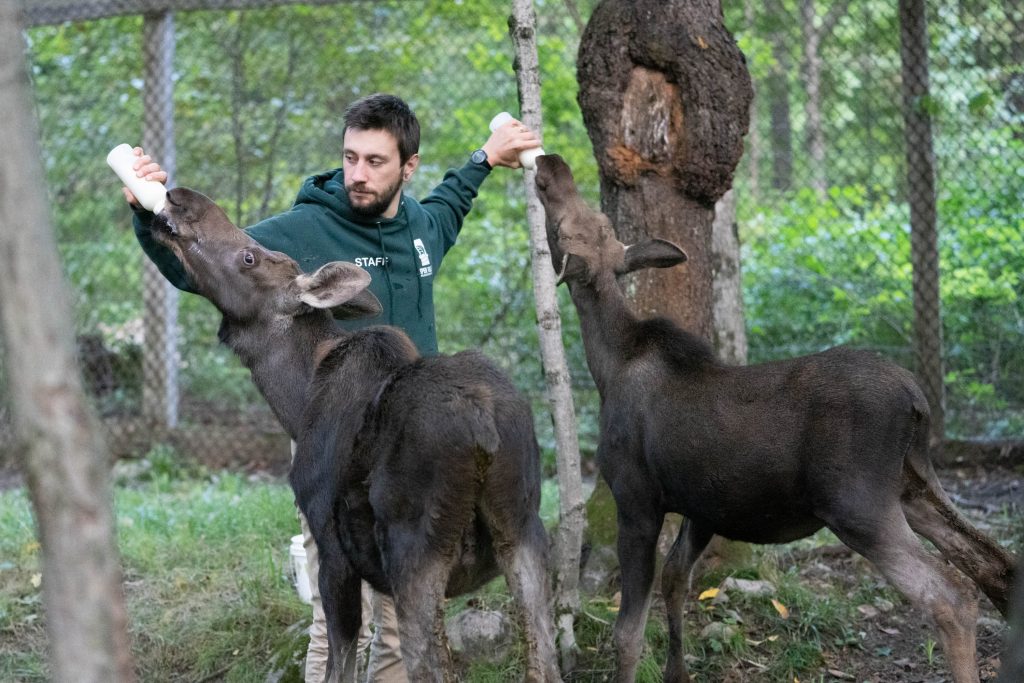After taking in a record number of animals over the last two years, the team at Aspen Valley Wildlife Sanctuary is gearing up for what could be their busiest spring season to date.
Spring is always the busiest time of year at Aspen Valley due to the intake of orphaned wildlife, said executive director Linda Glimps, so the staff uses the months leading up to spring to do maintenance work and gather supplies. Each animal species has its own specific milk replacer, so the team places a variety of food orders before things start to get busy with intakes around April. They also work to recruit more full-time and part-time volunteers as they care for their recent intakes and permanent residents.
“Last year, 2021, Aspen Valley had a record high number of animal intakes in their almost 50 year history,” Glimps said. “We took in over 1,100 animals and that made up 103 different species. The previous year, we thought it was a record high, but we surpassed that last year and we anticipate that the trend is just going to continue.”
Glimps said the increase in injured or orphaned wildlife could simply be the result of urban sprawl. More people living and spending time in Muskoka leads to more traffic on the roads as well as more people coming across animals in need. To help address that need, the sanctuary has been working on several projects over the winter, including the creation of a new animal intake building.
In the past, locals bringing animals to the sanctuary would do the intake process outside, but now, the sanctuary has completed construction on a building at their entrance that is dedicated to animal drop-off and intake. The building also provides much needed additional office space, so the team is excited about the new building as well as the upcoming spring season.
“We’ve had a chance to take some vacation and get some rest while we work on these priority projects and so we’re feeling really optimistic about the spring,” Glimps said. “Also, we are filling all of our vacancies for our full-time volunteers when previously, because of COVID travel restrictions, we were not able to, so things are starting to feel like we’re back to normal.”
The team at the sanctuary is happy to welcome back their international students after travel restrictions kept them away for the past two years. Students from abroad typically make up about half of the sanctuary’s full-time volunteers and they play a crucial role in its operations.
Full-time volunteers live in free shared accommodations for a minimum of four weeks and act as caretakers for the wildlife. They’re critical to the sanctuary’s ability to take in as many animals as possible and provide quality care to each one, Glimps said. The sanctuary is also looking to bring in more part-time volunteers.
They need the most help once the snow has melted, doing jobs like landscaping, gardening and setting up outdoor enclosures, but there’s work to be done all year round. Volunteers often help with transporting animals as well as cleaning and doing other maintenance, and locals looking to get involved can start by submitting an application online. For those who can’t volunteer, there are still ways to support Aspen Valley’s efforts.
“Rehabilitating wildlife is very expensive,” Glimps said. “Each species has their own specific diet. When they come in as orphans, they need a very specific milk replacer, so we spend a lot of donors’ money just in terms of the nutrition as well as medication because these animals when they come in, they’re also vaccinated.”
Though they do have a wishlist of most needed items on their website, financial donations are the most helpful right now, Glimps said, since it allows their team to direct money where it’s needed most. One way to contribute money while also learning about local wildlife is by taking a guided tour at the facility.
Tours have been suspended throughout the pandemic, but with the recent change to COVID restrictions, the team at the sanctuary was able to reinstate them on Feb. 18 ahead of Family Day weekend. Guided tours cost $20 per person and children five and under can tag along for free. The sanctuary staff hopes to once again be able to offer their tours year-round after missing out on the chance to share their knowledge with the public for so many months.
“One of our missions is to educate the public on cohabitating with wildlife… but also it’s a good fundraiser for the sanctuary and we use that money to actually buy food and again have vet visits and things like that for our permanent wildlife residents at the sanctuary,” Glimps said. “If you have heard of Aspen but you haven’t had a chance to come and actually see and learn more about what we do and come and see our permanent wildlife residents, I encourage you to do so.”
For more information on making donations, becoming a volunteer or visiting Aspen Valley Wildlife Sanctuary, go to the sanctuary’s website.
